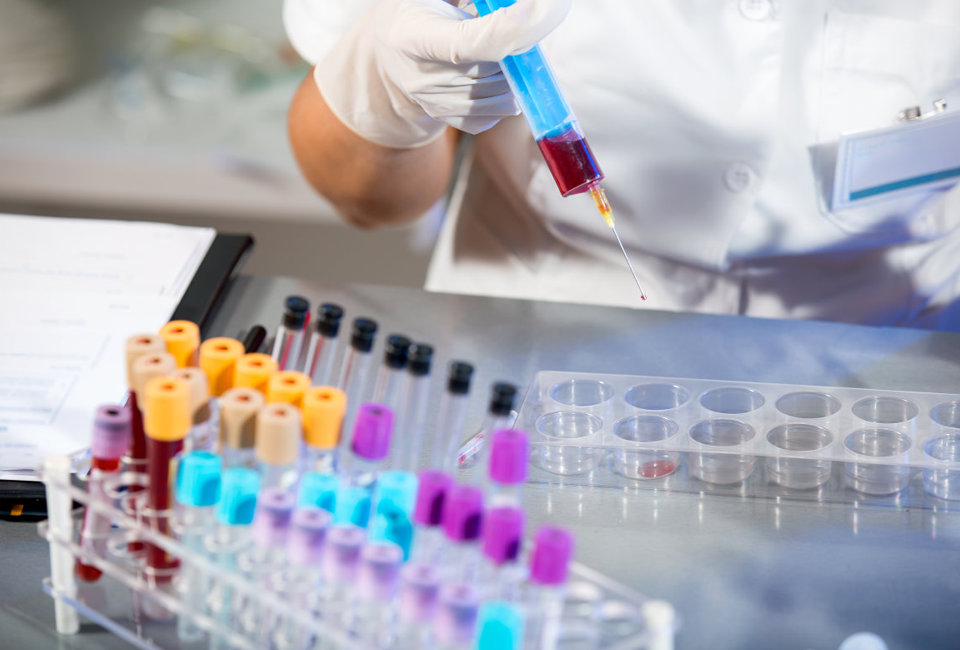Neurodegenerative disease, a kind of progressive mortal complex disease, includes Alzheimer’s disease (AD), Parkinson’s disease (PD), Huntington’s disease (HD), Amyotrophic lateral sclerosis (ALS). It is characterized by occult onset, long disease duration and few approaches to effective treatment, mostly obvious disease characteristics and symptoms occur in the middle-aged and elderly people when reached the intermediate or terminal stage. The current therapeutic means can only delay the disease progress at an extremely small degree due to the irreversibility of nerve damage, thus precise, noninvasive and payable early diagnosis and screening approaches are in urgent need at present.
The morbidity can be reduced, the onset time can be delayed and the progress of disease can be slowed down supposing that a potential patient was detected through precise early diagnosis and screening, then change of life style and positive drug use may be done ahead of time in which way the quality of life may be improved.

70% of senile dementia are caused by Alzheimer’s disease, middle-aged and elderly people are generally at risk of developing the disease. China is stepping into the aging stage rapidly with more than 250 million people over the age of 60 in 2018. The existing clinical early diagnosis methods includes PET molecular imaging and cerebrospinal fluid puncture analysis while the incidence of Alzheimer’s disease is low due to its high price in diagnosis, low universality in equipment or invasive examination, appropriately the ratio is 21% and the confirmed cases are 10 million in China, what’s worse, it is mostly diagnosis based on symptom in the terminal period instead of early detection and early treatment. Thus a detection method early, non-invasive, affordable and accessible is urgently needed for the pathological mechanisms of the disease in the clinical and healthcare market.

The main pathological mechanism of Alzheimer’s disease is neuronal cell apoptosis and obstruction of signaling pathways caused by amyloid plaques and neurofibrillary tangles.
The latest research has demonstrated that exosomes are the transmission mechanism of amyloid protein. Carrier Biomed has exclusively cooperated with Professor Andrew Hill, former Chairman of International Society for Extracellular Vesicles, established a quality control system of international level for biomarkers extraction from exosomes. Series of miRNA have been targeted through enriching exosomes in the blood of both patients with neurodegenerative diseases, including Alzheimer’s disease, and healthy subjects, together with high-throughput sequencing and large amount of data analysis. The expression profiling is highly different between patients and health subjects through clinical verification and that can be considered as clinical biomarkers.
In which the gathering of pathological mechanism in multiple miRNA biomarkers and amyloid protein are closely related.

Carrier Biomed is on this basis carrying out a significant early diagnosis and screening project for Alzheimer’s disease, comparing the biomarker target plate in the exosome with the clinical image and the gold standard of the scale. Multiple top scientists and clinical experts in neurology and exosome industry at home and abroad have participated in the study. Nearly 1000 long-term follow-up clinical studies have been completed in multiple top universities, research institutes and hospitals at home and abroad with international patents as its background technology.
This study is expected to produce the world’s first early diagnosis method with high sensitivity and specificity based on blood detection and comparison with PET molecular image.

The national average cost of medicine and care for a patient with Alzheimer’s disease at present is 35000 yuan, and the overall burden of Chinese society is 300 billion yuan, which is expected to rise to 700 billion yuan by 2030. The number of AD patients will be reduced by 57%, the total cost will be reduced by 45%, and the average lifetime risk of a 65 year old patient will be reduced from 10.5% to 5.7% suppose a screening tool for Alzheimer’s disease markers developed and the onset of AD delayed for five years.
The cost of PET molecular imaging, a clinical early diagnosis method, is more than 10000 yuan yet it relies on millions of dollars of PET equipment with small flux and difficulty in seeing a doctor. The in-vitro diagnosis based on blood exosome is expected to reduce the detection price, supporting small and medium-sized hospitals or medical inspection institutions for service providing, finally enable the diagnosis, treatment and health care management of Alzheimer’s disease for the middle-aged and elderly people.